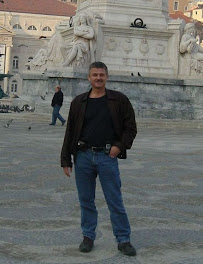I've been reading (and sometimes been involved in) several discussion threads lately that shows how confusing and complex the whole issue of CCSVI is, particularly with respect to MS. Some MSers have been to get Doppler ultrasounds and/or MRVs only to be told that no occlusions were found. Strange as it may sound to sound to someone outside the loop, that was very disappointing to them The thing is, in those cases where no stenoses or occlusions were found, it seems that perhaps the people running the equipment may not know what to look for... CCSVI is not always easy to find, because finding them takes some training and experience. Tied in with that is confusion about how many occlusions people should expect to find in MSers, with numbers as high 100% from proponents and as low as 1% from a technician in Montreal who did a Doppler ultrasound where no problems were found (though the technician didn't seem to be aware that an intercranial doppler ultrsound requires a special technique, and the azygous can't be assessed using the Doppler).
Felow MSer Shelley has sent me some kinks to several interesting stories. In http://www.facebook.com/note.php?note_id=222008892210&comments) of one MSer who did get assessed by a clinic in Barrie, Ontario, they did find occlusions and a vascular surgeon may be convinced to do some corrective measures, which means we would have a place in Canada to go to soon.
Other things of interest include the possibility of developing artificial arteries (and perhaps veins?) so that stents would not be needed - see copy of story below that Shelley sent to me - I don't know the source.
Shelley also sent me a link to an article in a US newspaper talking about MSers getting paranoid (possibly for some good reasons) that the US media is burying the CCSVI story: http://www.huffingtonpost.com/erika-milvy/possible-ms-breakthrough_b_396448.html. On the TiMS Forum there is worry that crying "conspiracy" too loudly will get CCSVI proponents labeled nut-cases, but certainly many are wondering why CCSVI isn't getting the media exposure in the US as it is in Canada and Europe.
Artificial artery is set to be tested in human trials early this year
London's Royal Free Hospital used nanotechnology to develop the small bypass graft from a polymer material.The material enables the graft to mimic the natural pulsing of human blood vessels, which enables them to deliver nutrients to the body's tissues. The ultimate aim is to use the graft in coronary artery and lower-limb arterial surgery, which doctors say could reduce amputations and heart attacks. If the trials - funded by a grant of £500,000 - are successful, the device could potentially help thousands of patients with vascular disease.
The wall of the artery is designed to be able to withstand blood pressure throughout a person's lifetime and is normally very strong. If it is damaged by disease such as hardening of the arteries, the artery can become blocked or in some patients the wall can weaken, becoming an aneurysm, and it may rupture.
The current surgical treatment is to bypass or replace the damaged vessel using a plastic graft or preferably a vein taken from the patient's own leg. But many patients do not have suitable veins. The plastic grafts were originally made with the same nylon used to make "drip-dry" shirts. But although they work well for larger grafts, they are less successful for grafts of less than 8mm. This is because these materials cannot pulse and their surfaces stimulate clotting of the blood in the graft.
Lives lost
Researcher Professor George Hamilton said: "There is a high failure rate using these rigid, small diameter bypass grafts. Many patients who have needed smaller bypass grafts, but have not had suitable veins, have had limbs amputated and some patients unable to have coronary bypass surgery have had heart attacks and died."
The new artificial artery has been designed to mimic the natural version as closely as possible. It is strong, flexible, resistant to blood clotting and pulses rhythmically to match the beat of the heart. Using nanotechnology, the researchers incorporated specific microscopic molecules into the graft. Some aid circulation, while others encourage specialised stem cells to coat its lining, boosting its ability to repair damaged blood vessels still further. Professor Hamilton said: "This will be hugely beneficial to patients in the NHS as we will be able to reduce heart attacks, reduce amputations and ultimately save lives."
In the long-term, the team hope to develop a range of "off the shelf" grafts, stents and other devices. Judy O'Sullivan, of the British Heart Foundation, said: "We welcome this interesting development which could potentially be of enormous benefits to patients who need a bypass operation to treat their coronary heart disease.
"The availability of suitable artificial arterial grafts would mean that more patients could benefit from the bypass operation whilst avoiding having a wound following removal of a patient's own veins or arteries to be used as grafts, as current practice requires."
Subscribe to:
Post Comments (Atom)




No comments:
Post a Comment